
All categories
Featured selections
Trade Assurance
Buyer Central
Help Center
Get the app
Become a supplier

(23492 products available)




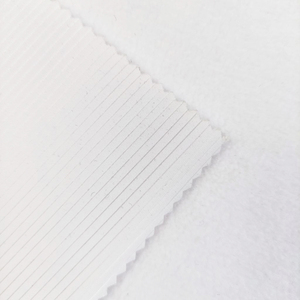







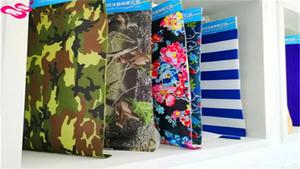




















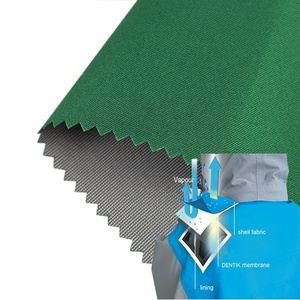



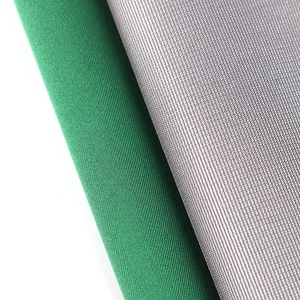
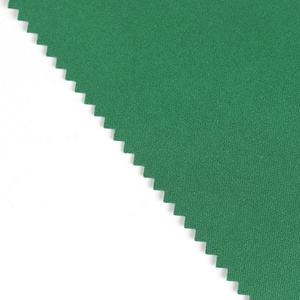
Polyester PTFE laminated fabric is a contemporary, composite material that integrates the advantageous features of both polyester and PTFE (Polytetrafluoroethylene) through a lamination process. The outcome is a highly functional, adaptable fabric with various applications, especially in sectors necessary for waterproofing, durability, and resistance to extreme temperatures and chemicals. Numerous types include the following:
Standard laminated PTFE polyester fabric
This is the most typical form of laminated fabric. A layer of PTFE is adhered to a polyester base. The polyester gives structural integrity, while the PTFE layer offers outstanding chemical and weather resistance.
Microporous PTFE laminated fabric
This PTFE fabric is typical for outdoor gear and medical applications. A microporous layer of PTFE is applied to offer breathability while preserving water and chemical resistance. This makes it appropriate for jackets, tents, and medical covers.
PTFE coated polyester fabric
A thin PTFE layer is often applied to one or both sides of the polyester fabric in this case. This fabric is less expensive than laminated versions and is frequently found in industrial and commercial applications where moderate exposure to chemicals or temperatures exists.
Biomimetic PTFE laminated fabric
This material mimics natural organisms such as pine cones or fish scales to enhance properties like self-cleaning or additional water repellency. They are still in research and development as functional textiles but are slowly entering markets focused on high-performance outdoor gear.
Expanded PTFE laminated fabric
In this version, the PTFE is expanded before lamination with polyester. The result is a fabric that, while still thin, has a higher volume, better insulation properties, and flexibility. It's popular in specialized industrial gear where insulation and resistance are crucial, like protective clothing in hazardous environments.
PTFE polyester laminated fabric combines the water-repelling and high-temperature resistance properties of PTFE with the tensile strength and durability of polyester. This makes the material versatile for industrial, medical, and outdoor use. Resistance properties include the following:
Chemical resistance
PTFE is renowned for its resistance to virtually all chemicals, including corrosive acids, bases, and solvents. Polyester, while durable, can degrade when exposed to certain chemicals, but when laminated with PTFE, the underlying polyester is well protected from chemical damage. PTFE's resistance to chemical action makes laminated polyester PTFE fabric appropriate for use in environments requiring contact with pollutants and extreme chemical substances, including laboratories, industrial plants, and medical facilities.
Temperature resistance
PTFE can sustain extreme temperatures, up to about 260 °C (500 °F), without losing its structural integrity. This is significantly higher than most polymers. Polyester degrades at lower temperatures, roughly around 120 °C (248 °F). However, when laminated with PTFE, the polyester layer can still maintain its form even when exposed to heat. This makes the fabric useful in applications where exposure to great warmth is frequent, like protective clothing and oven covers.
Electrical resistance
PTFE has good dielectric properties, making it ideal for electrical insulation applications. The polyester base provides strength and durability, while the PTFE layer gives electrical insulation. This makes laminated fabrics suitable for electrical equipment covers.
UV resistance
PTFE provides superior UV radiation blocking. Extended exposure to UV light can break down many materials, including polyester. PTFE blocks UV radiation and prolongs the fabric's lifespan. This makes the material suitable for outdoor uses.
Mechanical resistance
PTFE laminated polyester fabric is typically stronger and more durable than other fabrics. It is rip- and wear-resistant. The mechanical resistance properties are due to a combination of PTFE and polyester. PTFE gives flexibility, while the polyester provides tensile strength. This makes it suitable for use in manufacturing industrial equipment, medical gear, and outdoor apparel.
Polyester PTFE laminated fabric has broad customization options to meet specific requirements for different applications, whether in manufacturing outdoor gear, medical devices, or industrial solutions. Key customization options include the following:
Thickness
The lamination thickness between the PTFE and polyester can be modified depending on the intended use. For example, a thinner lamination will create a more supple fabric, suitable for medical or apparel uses. In contrast, a thicker lamination is more robust and will be better suited for industrial uses.
PTFE type
Custom PTFE types can include expanded, sintered, or non-sintered PTFE, depending on the desired properties. Expanded PTFE offers high insulation and filtration properties. In contrast, sintered PTFE provides better chemical resistance.
Adhesive
The adhesive used for lamination can significantly affect the fabric's performance. Custom adhesives are available depending on the application. For example, a heat-resistant adhesive is appropriate for high-temperature environments.
Custom colors and finishes
Polyester PTFE fabrics can be produced in nearly any color to satisfy branding or aesthetic requirements. Besides, a wide variety of finishes, such as matte or glossy, or differing degrees of fabric hand, can be applied to the polyester surface to achieve the intended aesthetic effect. Moreover, the functional purpose of the fabric can be achieved by incorporating additional treatments to enhance abrasion or UV resistance.
Custom treatments
Further custom treatments can be integrated into the polyester surface to enhance the fabric's performance. For instance, adding antimicrobial treatments makes the fabric suitable for medical or hygiene-related applications. Other treatments include anti-static surfaces and flame retardant applications, which are particularly crucial for industrial textiles and protective wear. Super hydrophobic surface treatments can also be applied for outdoor gear, enhancing water repellency and minimizing dirt and water retention.
Selecting the appropriate polyester PTFE laminated fabric will depend on the demands of the particular use case. Several important criteria to consider include the following:
Ptfe layer type
The kind of PTFE layer significantly influences the fabric's qualities. Non-expanded PTFE is appropriate for uses where great flexibility and chemical resistance are required. Expanded PTFE offers superior flexibility, insulation, and filtration. Sintered PTFE provides a denser, more durable surface appropriate for extreme chemical environments. Understanding the needs will help direct which PTFE layer type is best for the fabric.
Polyester type
The type of polyester used as the base layer affects the fabric's strength, durability, and flexibility. High-tenacity polyester is preferred for industrial applications due to its superior tensile strength. Cooling or moisture-wicking polyester is most suitable for outdoor gear or apparel.
Laminate bonding technology
The bonding technology employed between the polyester and PTFE layers impacts the fabric's performance in harsh environments. Manufacturing usually uses blind lamination for low-cost or high-volume applications. In contrast, contrary value-added applications, such as medical or engineering environments, favor bonded lamination, which provides greater durability and resistance to delamination.
Surface treatments
Consider any additional surface treatments that may be necessary for the application. Antimicrobial or anti-static treatments can be integrated for products intended for medical or electronic usage. Super hydrophobic treatments improve water and grime resistance. UV coating will help the fabric resist fading and deterioration from prolonged exposure to sunlight.
Customization requirements
If any special demands, such as particular lamination thicknesses, fabric colors, PTFE grades, or custom treatments, exist, manufacturers can provide the materials in the required specifications. They will aid in making the appropriate polyester PTFE laminated fabric by considering these factors and the application environment.
A.: A waterproof yet breathable fabric is created when a layer of PTFE is bonded to a layer of polyester. The polyester adds tensile strength, while the PTFE layer provides chemical and weather resistance. This makes the material ideal for outdoor apparel, medical covers, and industrial uses.
A.: This fabric is exceptionally durable. The lamination combines the strength of polyester with the flexibility and chemical resistance of PTFE. The materials are also abrasion-resistant, making them suitable for harsh environments. Exposure to UV light will not diminish the material's integrity over time as it will with other fabrics.
A.: Yes. The lamination thickness, types of PTFE and polyester used, and additional surface treatments can be customized to meet user needs. Antimicrobial treatments, custom colors, and differing degrees of lamination are additional surface treatments that will meet specific application requirements.
A.: The fabric is easy to maintain. Clean it with water and a mild detergent. Do not use harsh chemicals because they may degrade some surface treatments. Allow it to air dry completely. An occasional application of a compatible rejuvenating product will help the fabric last longer.
A.: PTFE is a remarkable addition to fabrics. It is the first synthetic to be made, and its strength, flexibility, and chemical resistance rank among its superb properties. It blocks up to 98% of UV rays and is highly breathable and waterproof, making it ideal for several applications, including outdoor apparel, industrial use, and medical covers.